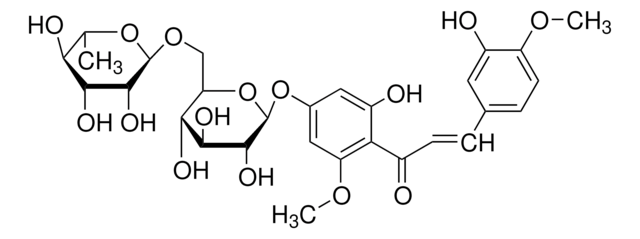MAK106
CETP Activity Assay Kit
Supplied by Roar Biomedical, Inc.
Synonym(s):
Cholesteryl ester transfer protein activity assay kit
Sign Into View Organizational & Contract Pricing
All Photos(4)
About This Item
UNSPSC Code:
12161503
NACRES:
NA.84
Recommended Products
usage
sufficient for 100 fluorometric tests
application(s)
pharmaceutical
detection method
fluorometric
relevant disease(s)
cardiovascular diseases
storage temp.
2-8°C
Gene Information
human ... CETP(1071)
General description
Cholesteryl ester transfer protein (CETP) is present in normal human plasma. The protein transfers neutral lipids from high density lipoproteins (HDL) to very low density lipoprotein (VLDL) and low density lipoprotein (LDL). CETP plays an important role in lipoprotein metabolism and influences the reverse cholesterol transport pathway. The method is useful for measuring CETP activity in plasma or serum in all species that express CETP.
Application
Cholesteryl ester transfer protein (CETP) activity Assay Kit has been used for measurement of CETP activity in the plasma samples.
Features and Benefits
Compatible with high-throughput handling systems.
Suitability
Suitable for the detection of cholesteryl ester transfer protein (CETP) in plasma / serum (fresh or frozen), recombinant or purified CETP.
Principle
The CETP Activity Assay Kit uses a proprietary substrate that enables the detection of CETP-mediated transfer of neutral lipid from the substrate to a physiological acceptor. The transfer activity results in an increase in fluorescence intensity (λEx=535 nm/λEm=587 nm). In a total volume of 200 μL, the assay is linear from 0.2 to 0.8 μL of normal human plasma. Assay results not affected by endogenous plasma HDL, LDL or VLDL concentrations.
related product
Product No.
Description
Pricing
Storage Class Code
10 - Combustible liquids
Certificates of Analysis (COA)
Search for Certificates of Analysis (COA) by entering the products Lot/Batch Number. Lot and Batch Numbers can be found on a product’s label following the words ‘Lot’ or ‘Batch’.
Already Own This Product?
Find documentation for the products that you have recently purchased in the Document Library.
Customers Also Viewed
Catherine J McNeal et al.
Cardiovascular research, 98(1), 83-93 (2013-01-29)
We discovered that some adults with coronary heart disease (CHD) have a high density lipoprotein (HDL) subclass which induces human aortic smooth muscle cell (ASMC) apoptosis in vitro. The purpose of this investigation was to determine what properties differentiate apoptotic
Lisa Sawrey-Kubicek et al.
The American journal of clinical nutrition, 110(3), 617-627 (2019-06-07)
Postmenopausal women are at higher risk for cardiovascular disease (CVD) than their younger counterparts. HDL cholesterol is a biomarker for CVD risk, but the function of HDL may be more important than HDL cholesterol in deciphering disease risk. Although diet
Thor Ueland et al.
The Journal of clinical endocrinology and metabolism, 105(3) (2019-10-31)
Cholesteryl ester transfer protein (CETP) regulates high-density lipoprotein (HDL) cholesterol levels and interaction between glucose, and HDL metabolism is central in the development of diabetes. We hypothesized that CETP levels would be regulated in diabetic pregnancies. We tested the hypothesis
Tatjana Josefs et al.
Circulation research, 128(6), 690-705 (2021-02-04)
[Figure: see text].
Chunxiu Hu et al.
PloS one, 6(5), e19423-e19423 (2011-05-26)
Lipids are known to play crucial roles in the development of life-style related risk factors such as obesity, dyslipoproteinemia, hypertension and diabetes. The first selective cannabinoid-1 receptor blocker rimonabant, an anorectic anti-obesity drug, was frequently used in conjunction with diet
Our team of scientists has experience in all areas of research including Life Science, Material Science, Chemical Synthesis, Chromatography, Analytical and many others.
Contact Technical Service








